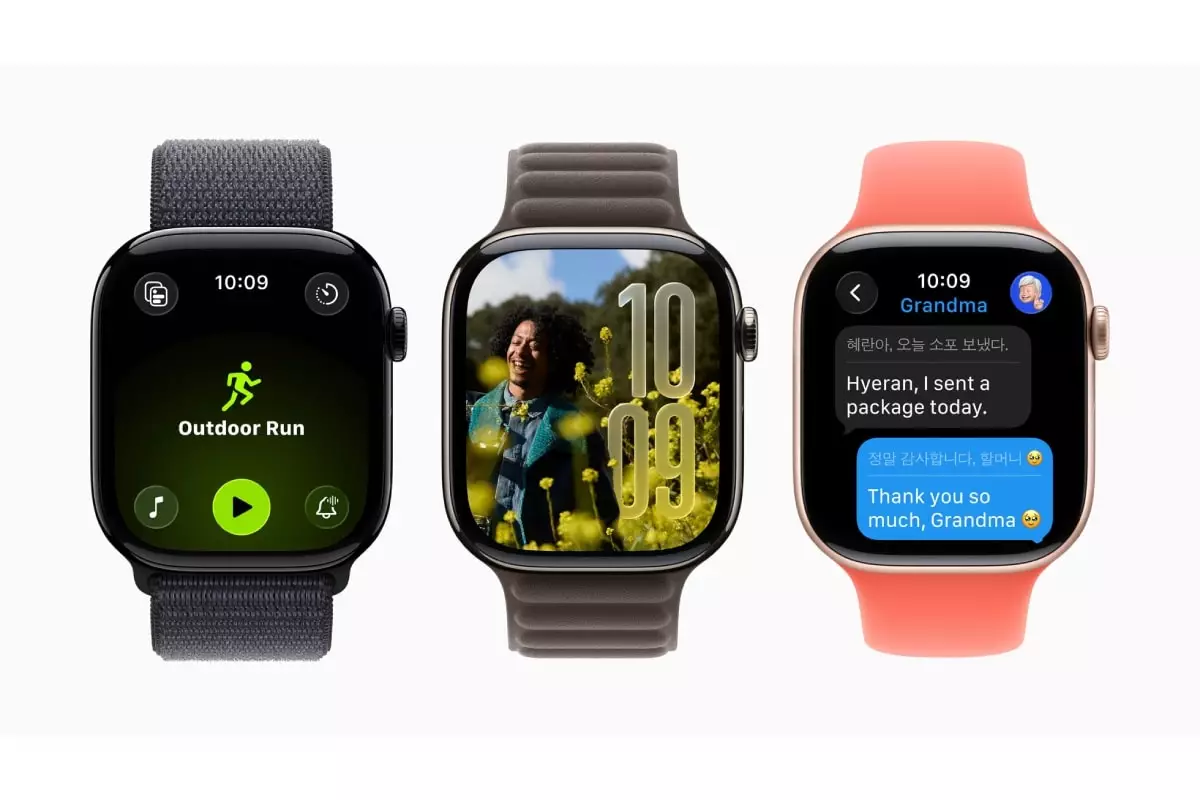In the fast-evolving realm of technology, few companies command the same reverence as Apple. Their latest announcement at WWDC 2025, the release of watchOS 26, showcases a daring exploration into the world of Liquid Glass—a design choice that seems both audacious and intuitive. This innovative aesthetic aims not just to refresh the visual allure of the Apple Watch but to redefine its entire user experience. Through elements like Smart Stack and the revamped Control Center, Apple demonstrates an unyielding commitment to elevating the functionality of wearables, folding together aesthetics and utility seamlessly.
However, the introduction of this design language isn’t simply a display of bravado; it’s an anticipated evolution. Wearable technology has reached a point where the previous generations feel stale, and consumers demand more dynamic interfaces—something that enhances personal interactions with the device while offering visually fulfilling experiences. The Liquid Glass design goes beyond merely capturing the attention—it’s about an emotional connection. Apple seems to intuitively grasp that technology shouldn’t just be smart; it should also resonate on a personal level.
Workout Buddy: The Personalized Fitness Companion
Among the most compelling features debuting with watchOS 26 is the AI-powered Workout Buddy. Tailored fitness insights that adapt based on personal history symbolize a significant leap in personalized health monitoring. Gone are the days when fitness applications merely registered heart rates and output calories. Now, Apple’s Workout Buddy brings the workout experience into a nuanced territory by offering users real-time pep talks and detailed tracking of key moments during sessions.
Incorporating Artificial Intelligence signals not just a technological play, but a deeper understanding of fitness as a personal journey. The celebration of small victories—like a personal best in running splits—recognizes that fitness is as much mental as it is physical. While some critics predict that relying on an AI companion for motivation might dehumanize the experience, I argue that in an era saturated with distractions, tailored encouragement could be just what users need to keep moving forward.
Contextual Awareness: Messaging and Notifications Enhanced
Furthermore, the advent of Live Translation and improved Smart Replies within the Messages app lays the groundwork for a more contextually-aware communication experience. These advancements scream of progress in the realm of accessibility and practicality, allowing users to communicate effortlessly, regardless of language barriers. Apple’s push towards contextual messaging not only caters to a global audience but is a testament to their desire to make technology more user-friendly.
Impressively, dismissing notifications through a mere flick of the wrist illustrates an understanding of modern-day life—always in motion, always busy. In an age where interruptions are the norm, a simple gesture of being able to silence notifications can be a glorious return of control to the user. This feature promises to liberate users from the dependence on screens, allowing them to live more in the moment while remaining connected—a delicate balance that we, as a society, desperately need.
Accessibility and Usability: Features For Everyone
However, innovation must always accompany responsibility, and Apple seems to recognize that with the introduction of features beneficial to users with hearing disabilities, like Live Listen supporting live captions. This move reinforces the notion that technology—especially something as ubiquitous as a smartwatch—should serve as a vessel for inclusivity.
Nevertheless, as we applaud these advancements, the truth remains that technology often overlooks the less distinguished segments of the population. While these features are being introduced, they still need the visibility that attracts users who most need them. The challenge will be in ensuring that every advancement reaches those it’s intended to serve, and in doing so, creating an habitual acknowledgment of inclusivity in tech design.
As promising as watchOS 26 appears, it is crucial that we, as consumers, remain vigilant. The tech industry, particularly a juggernaut like Apple, often finds itself treading a fine line between innovation and commercialization. We must be critical of these offerings, resisting the allure of glossy messages and demanding meaningful changes that enhance our lives. The advancements presented in watchOS 26 could indeed lay the foundation for a rich and transformative experience—but it is on us to engage actively, ensuring that these aspirations don’t get lost in the hype.

